*NURSING > HESI > HESI Pharmacology/ Latest Questions and Complete Solutions/ Download To Score An A (All)
HESI Pharmacology/ Latest Questions and Complete Solutions/ Download To Score An A
Document Content and Description Below
HESI Pharmacology (A Graded) Latest Questions and Complete Solutions 1 . A healthcare provider prescribes cephalexin monohydrate (Keflex) for a client with a postoperative infection. It is most import... ant for the nurse to assess for what additional drug allergy before administering this prescription? A) Penicillins. B) Aminoglycosides. C) Erythromycins. D) Sulfonamides. A) Penicillins. Cross-allergies exist between penicillins (A) and cephalosporins, such as cephalexin monohydrate (Keflex), so checking for penicillin allergy is a wise precaution before administering this drug. 2. Which nursing intervention is most important when caring for a client receiving the antimetabolite cytosine arabinoside (Arc-C) for chemotherapy? A) Hydrate the client with IV fluids before and after infusion. B) Assess the client for numbness and tingling of extremities. C) Inspect the client's oral mucosa for ulcerations. D) Monitor the client's urine pH for increased acidity. C) Inspect the client's oral mucosa for ulcerations. Cytosine arabinoside (Arc-C) affects the rapidly growing cells of the body, therefore stomatitis and mucosal ulcerations are key signs of antimetabolite toxicity (C). (A, B, and D) are not typical interventions associated with the administration of antimetabolites. 3. When assessing an adolescent who recently overdosed on acetaminophen (Tylenol), it is most important for the nurse to assess for pain in which area of the body? A) Flank. B) Abdomen. C) Chest. D) Head. B) Abdomen. Acetaminophen toxicity can result in liver damage; therefore, it is especially important for the nurse to assess for pain in the right upper quadrant of the abdomen (B), which might indicate liver damage. (A, C, and D) are not areas where pain would be anticipated. 4. An adult client is given a prescription for a scopolamine patch (Transderm Scop) to prevent motion sickness while on a cruise. Which information should the nurse provide to the client? A) Apply the patch at least 4 hours prior to departure. B) Change the patch every other day while on the cruise. C) Place the patch on a hairless area at the base of the skull. D) Drink no more than 2 alcoholic drinks during the cruise. A) Apply the patch at least 4 hours prior to departure. Scopolamine, an anticholinergic agent, is used to prevent motion sickness and has a peak onset in 6 hours, so the client should be instructed to apply the patch at least 4 hours before departure (A) on the cruise ship. The duration of the transdermal patch is 72 hours, so (B) is not needed. Scolopamine blocks muscarinic receptors in the inner ear and to the vomiting center, so the best application site of the patch is behind the ear, not at the base of the skull (C). Anticholinergic medications are CNS depressants, so the client should be instructed to avoid alcohol (D) while using the patch. 5. The nurse is reviewing the use of the patient-controlled analgesia (PCA) pump with a client in the immediate postoperative period. The client will receive morphine 1 mg IV per hour basal rate with 1 mg IV every 15 minutes per PCA to total 5 mg IV maximally per hour. What assessment has the highest priority before initiating the PCA pump? A) The expiration date on the morphine syringe in the pump. B) The rate and depth of the client's respirations. C) The type of anesthesia used during the surgical procedure. D) The client's subjective and objective signs of pain. B) The rate and depth of the client's respirations. A life-threatening side effect of intravenous administration of morphine sulfate, an opiate narcotic, is respiratory depression (B). The PCA pump should be stopped and the healthcare provider notified if the client's respiratory rate falls below 12 breaths per minute, and the nurse should anticipate adjustments in the client's dosage before the PCA pump is restarted. (A, C, and D) provide helpful information, but are not as high a priority as the assessment described in (B). [Show More]
Last updated: 1 year ago
Preview 1 out of 29 pages
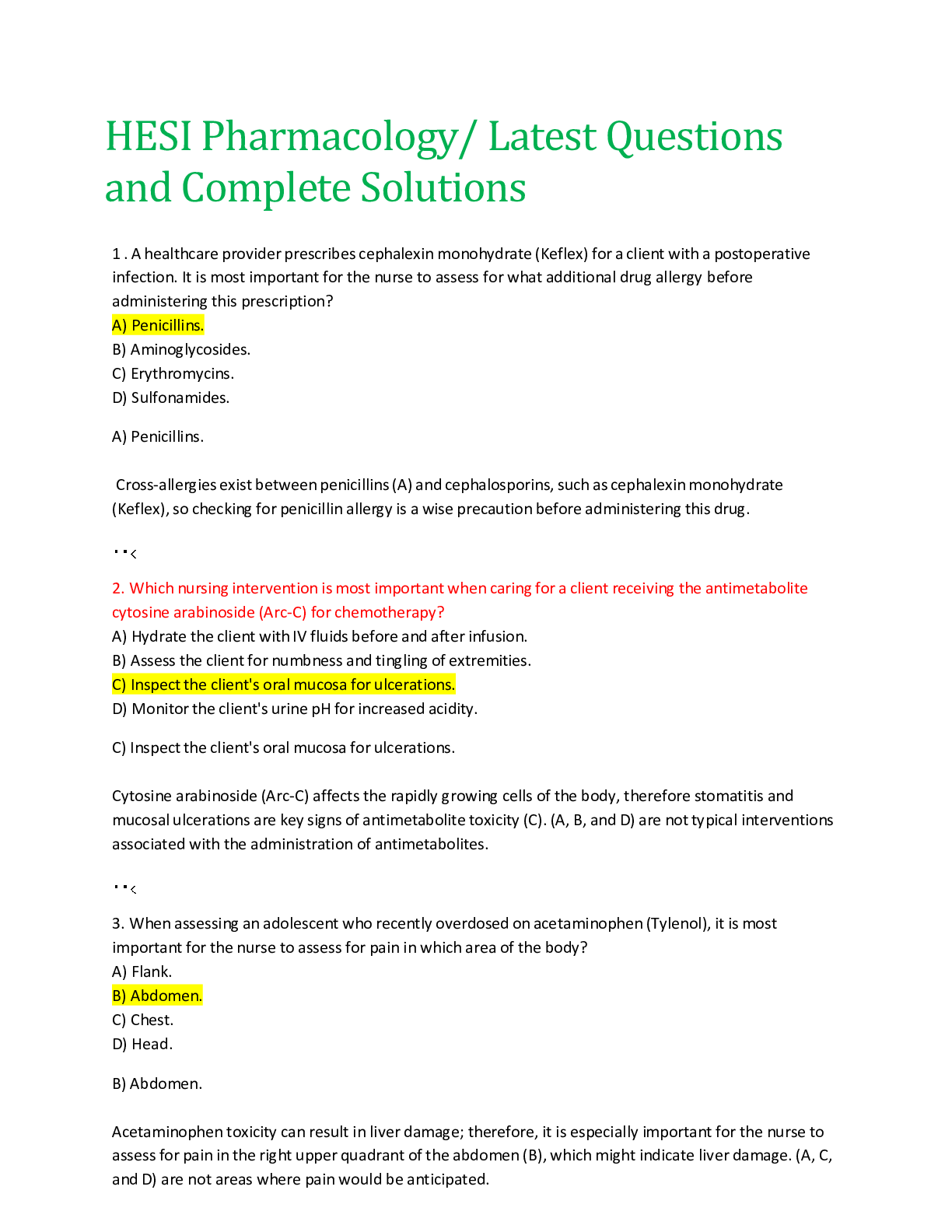
Reviews( 0 )
Document information
Connected school, study & course
About the document
Uploaded On
Jun 07, 2021
Number of pages
29
Written in
Additional information
This document has been written for:
Uploaded
Jun 07, 2021
Downloads
0
Views
36


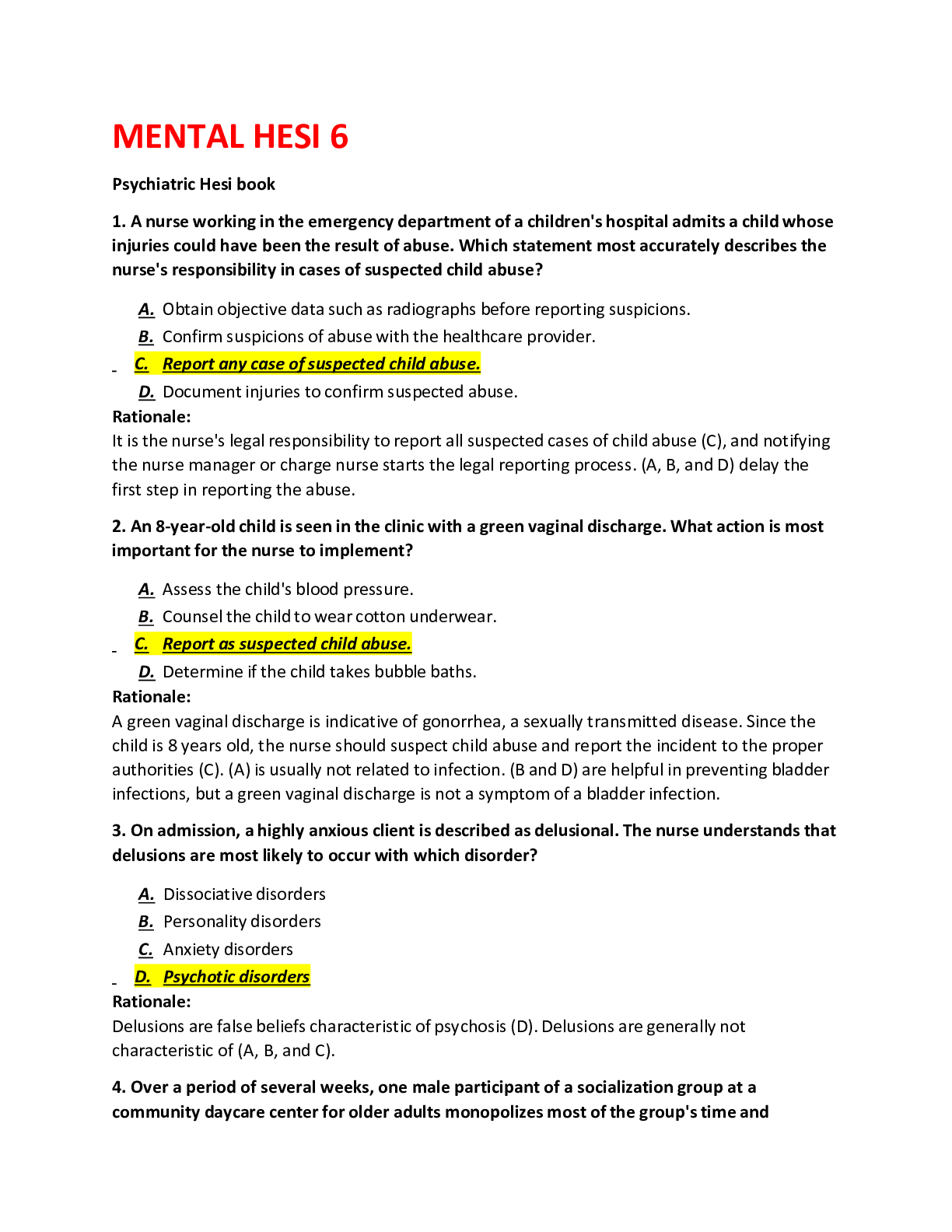
.png)
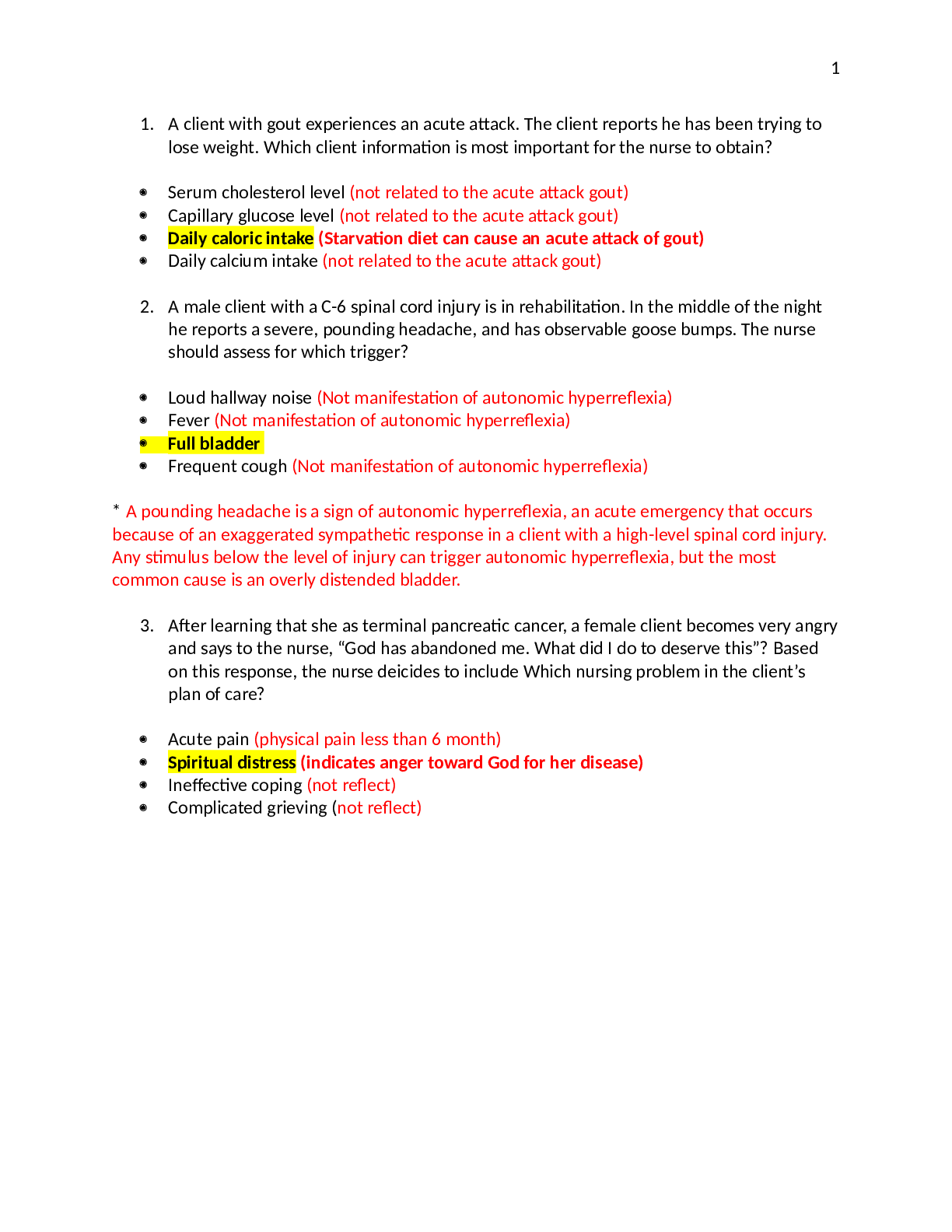
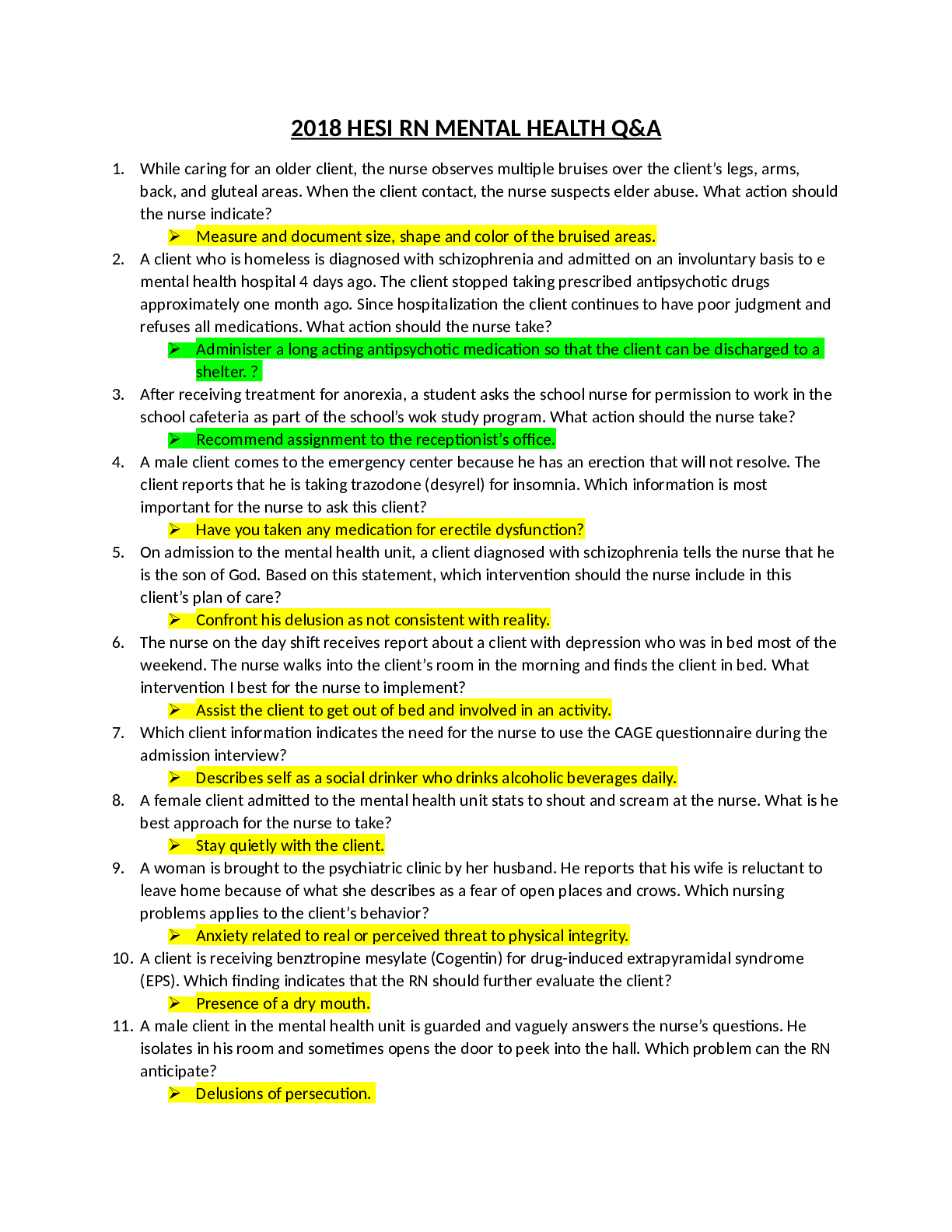
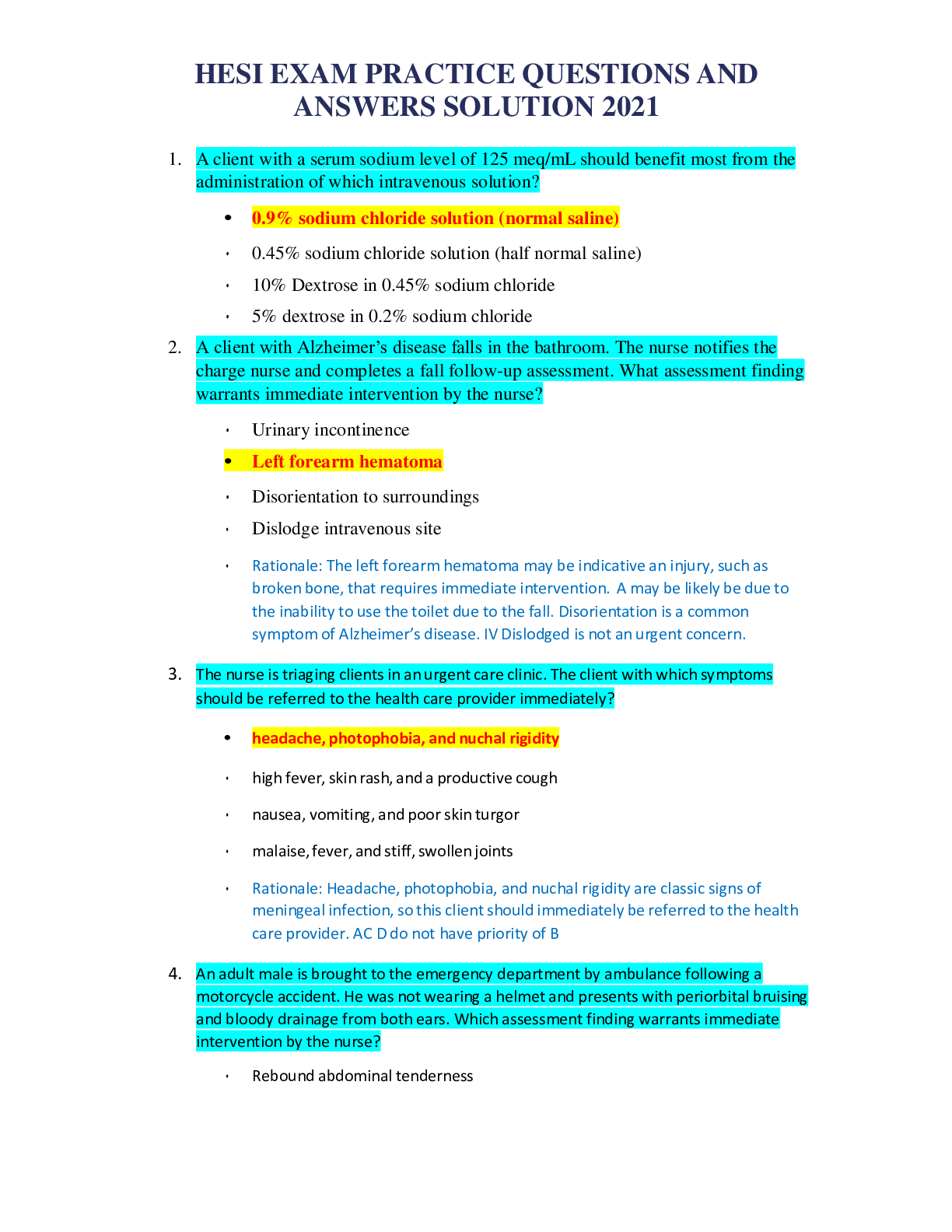
.png)

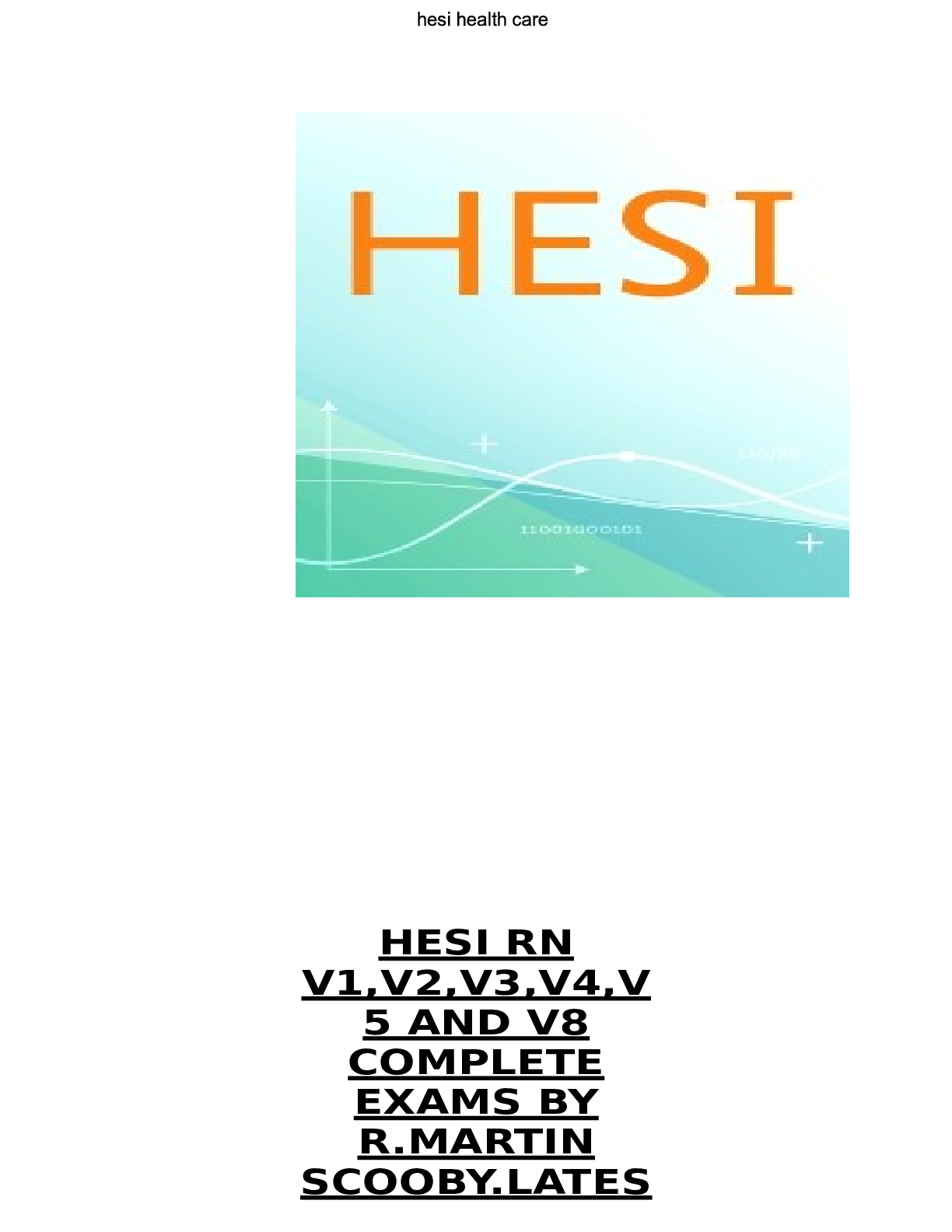
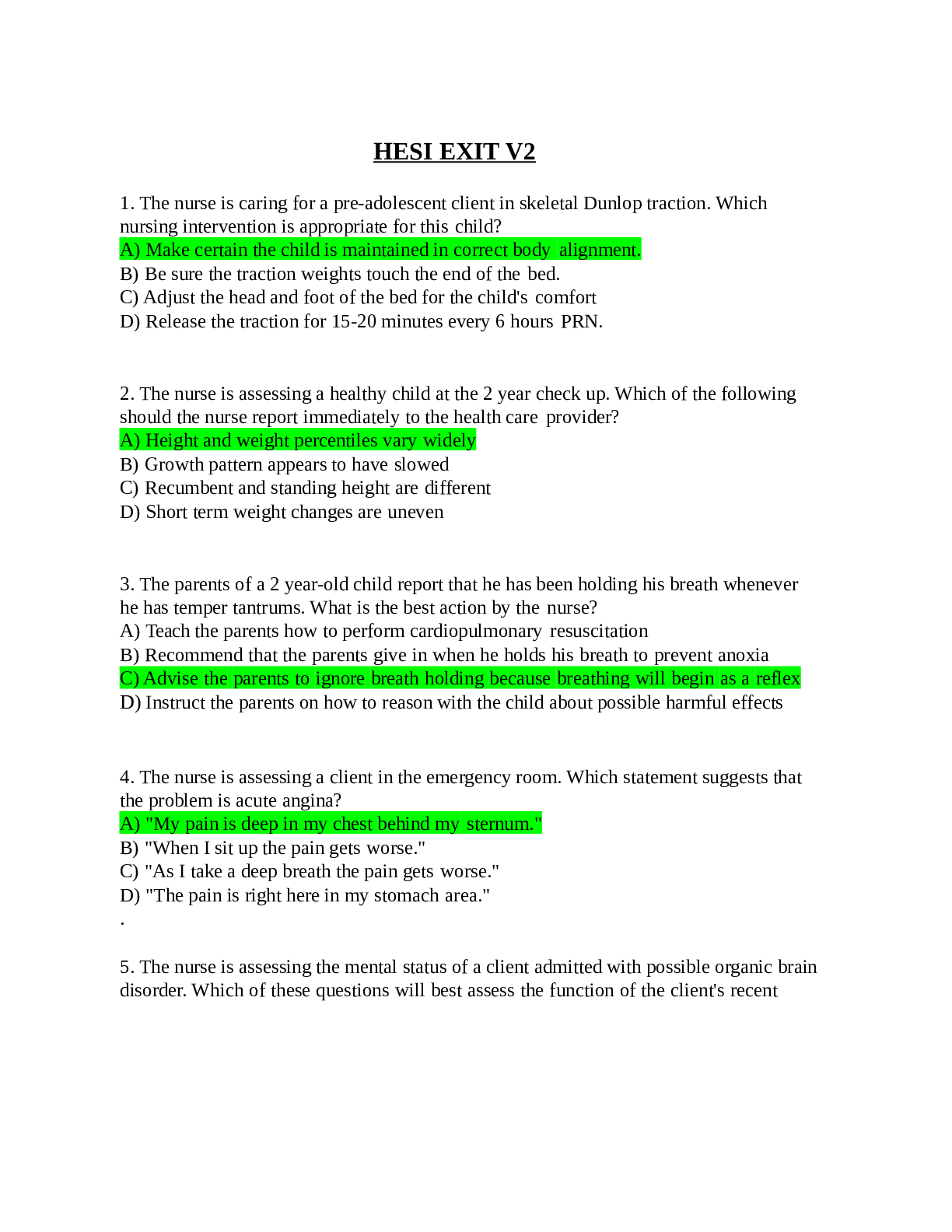
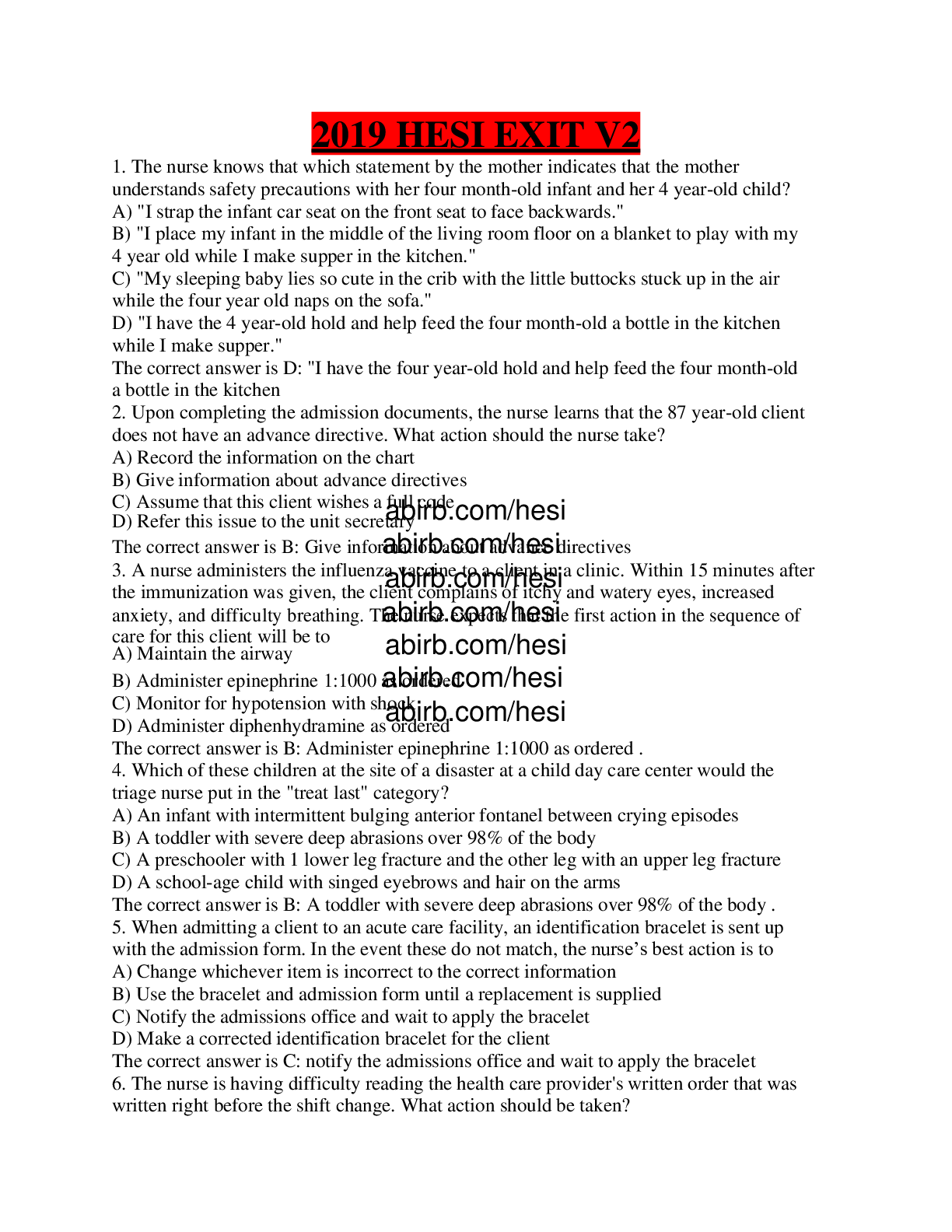
.png)
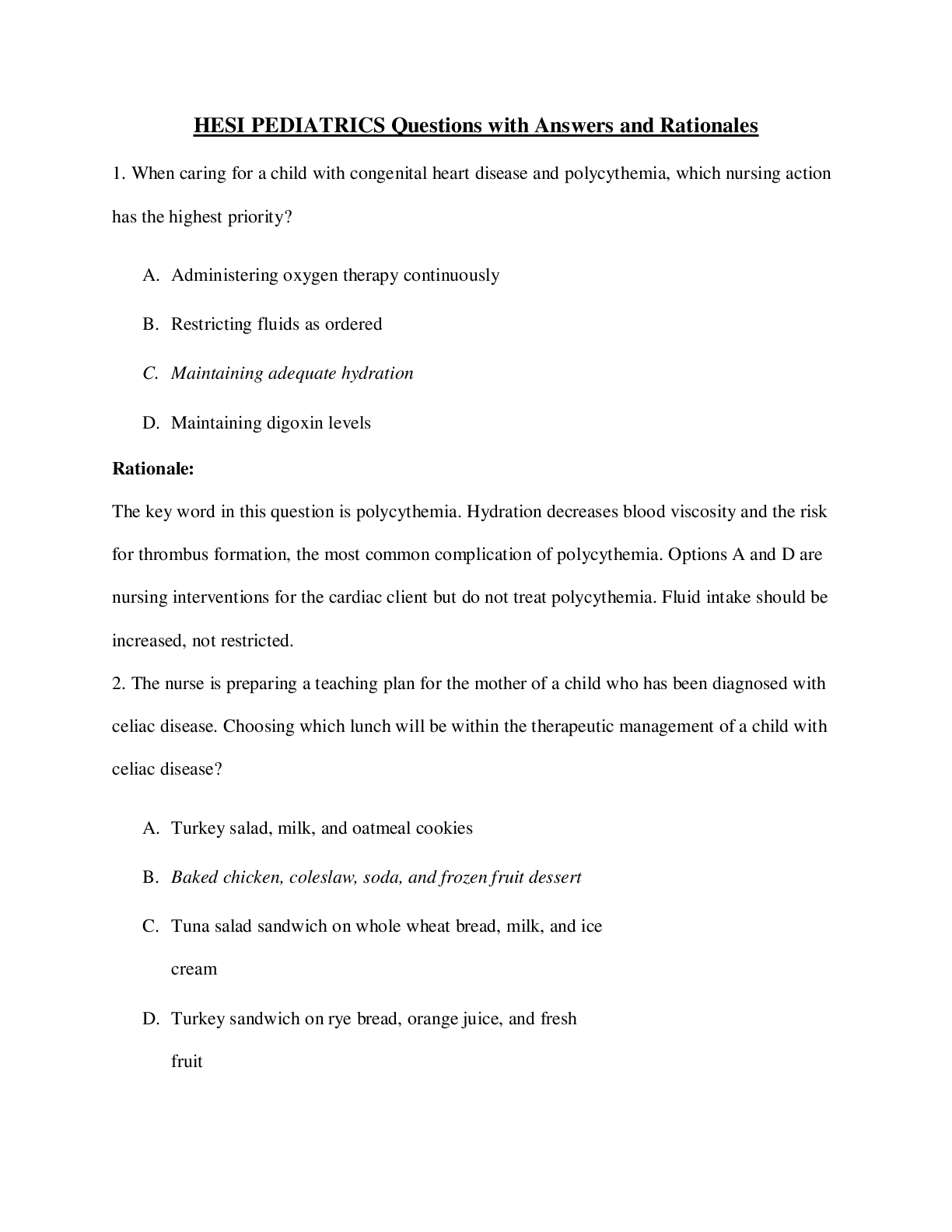
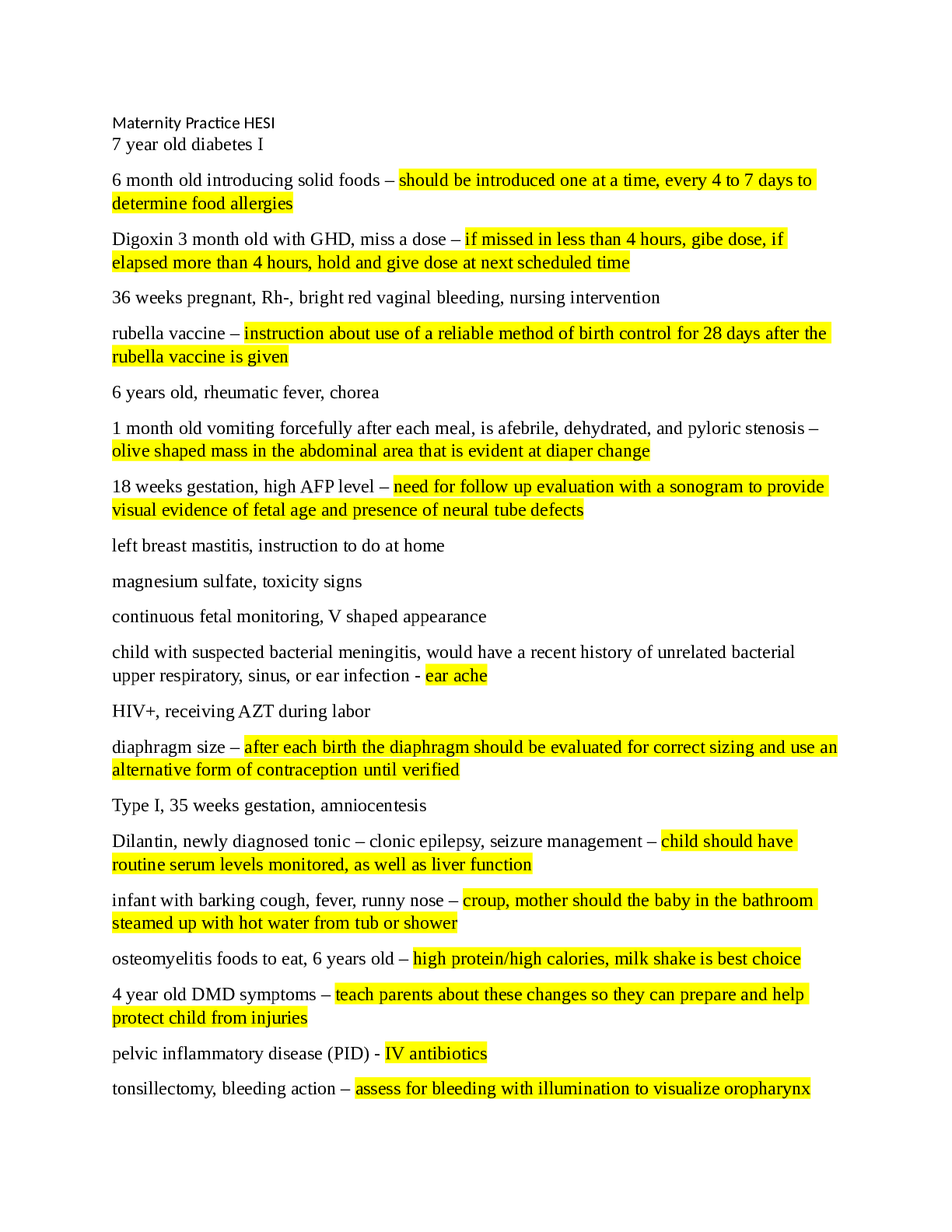
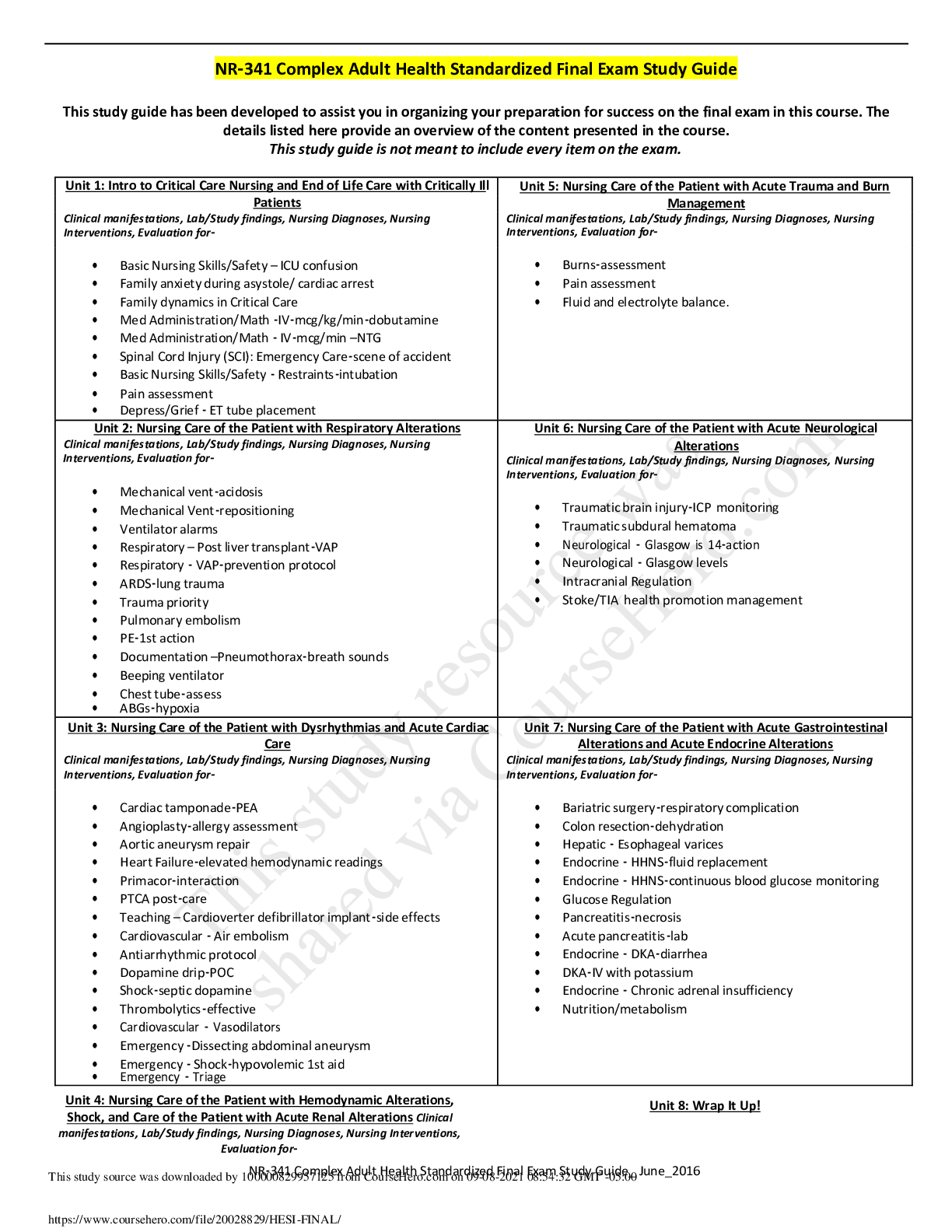
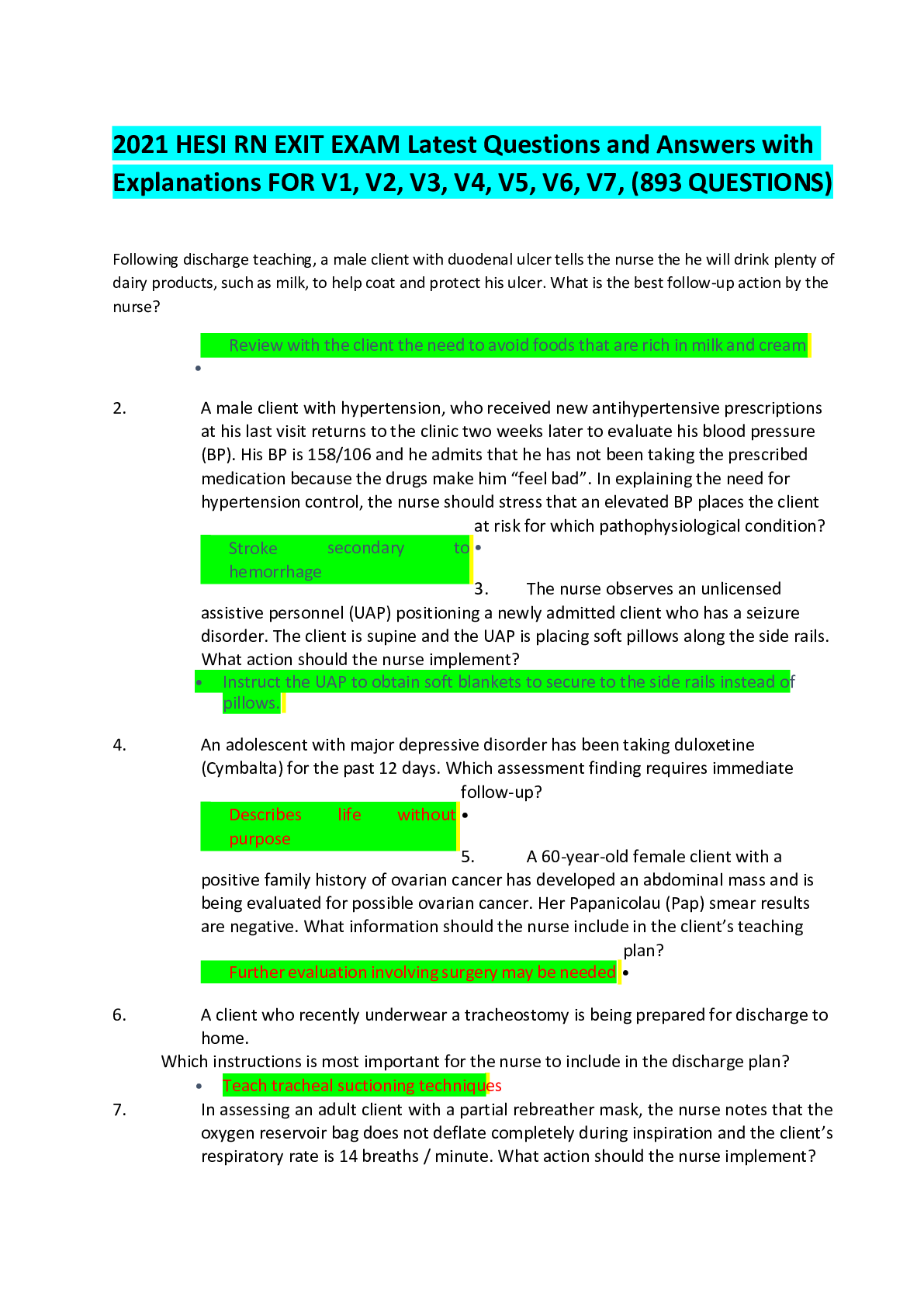
, Latest Questions and Answers with Explanations, All Correct Study Guide, Download to Score A.png)
, Latest Questions and Answers.png)
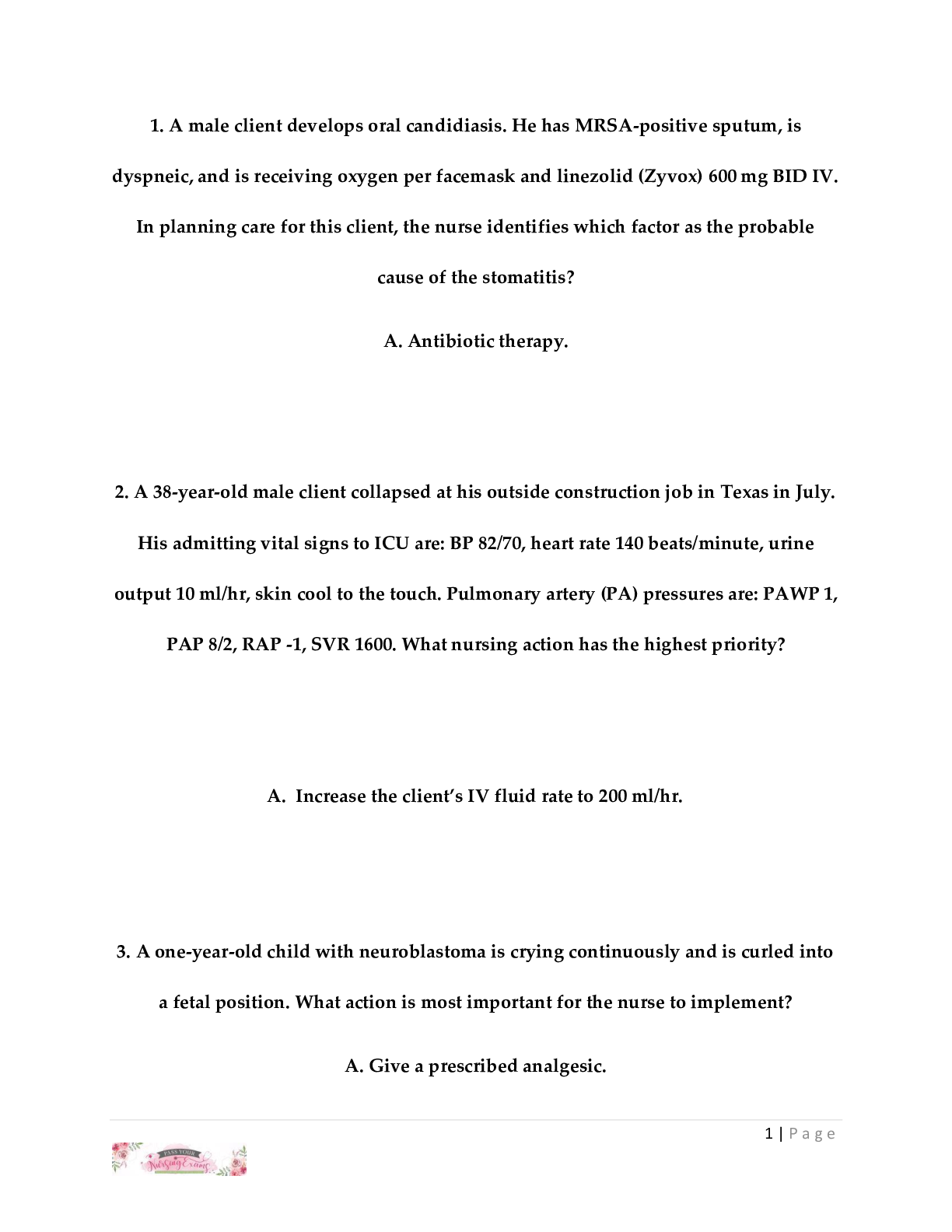
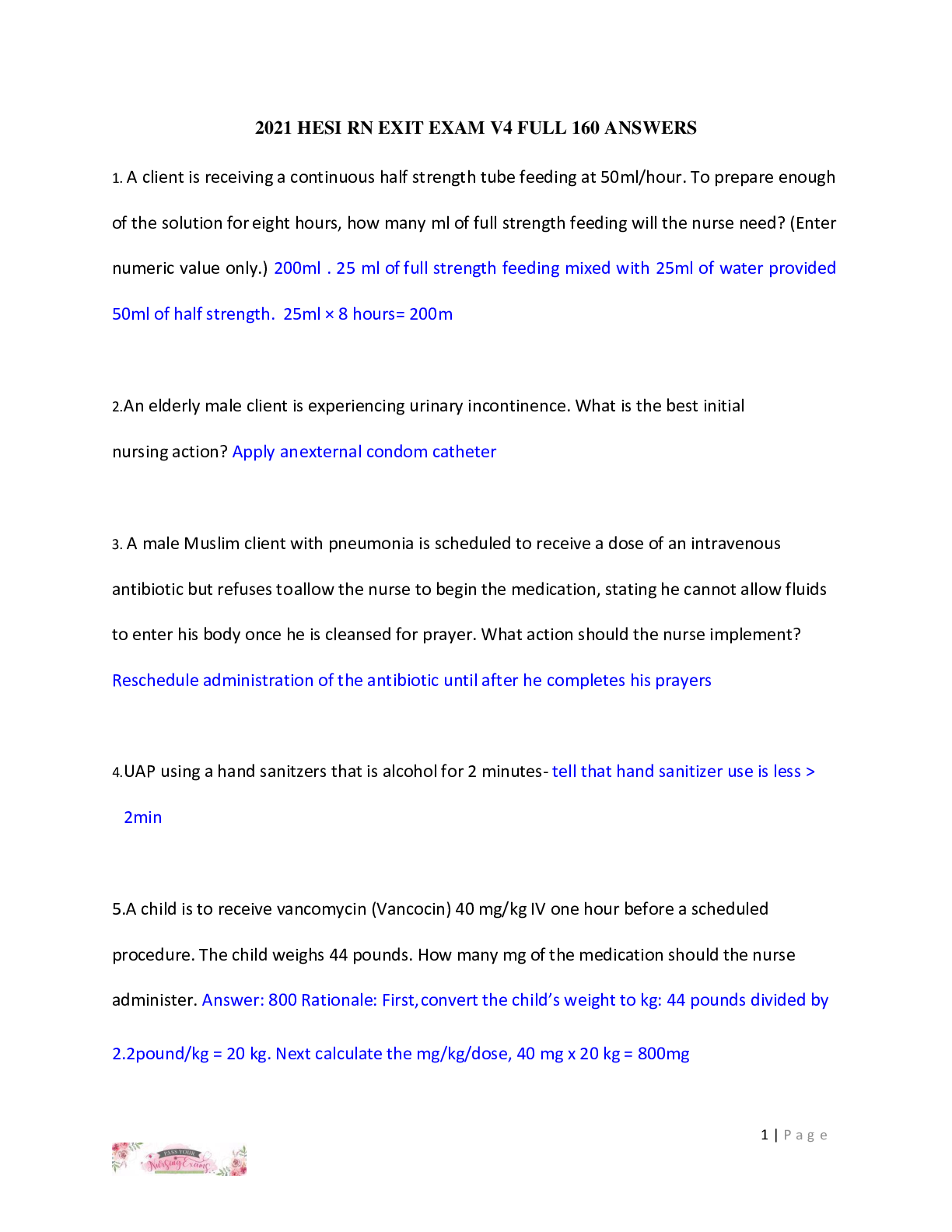
 LATEST QUESTIONS AND COMPLETE SOLUTIONS.png)
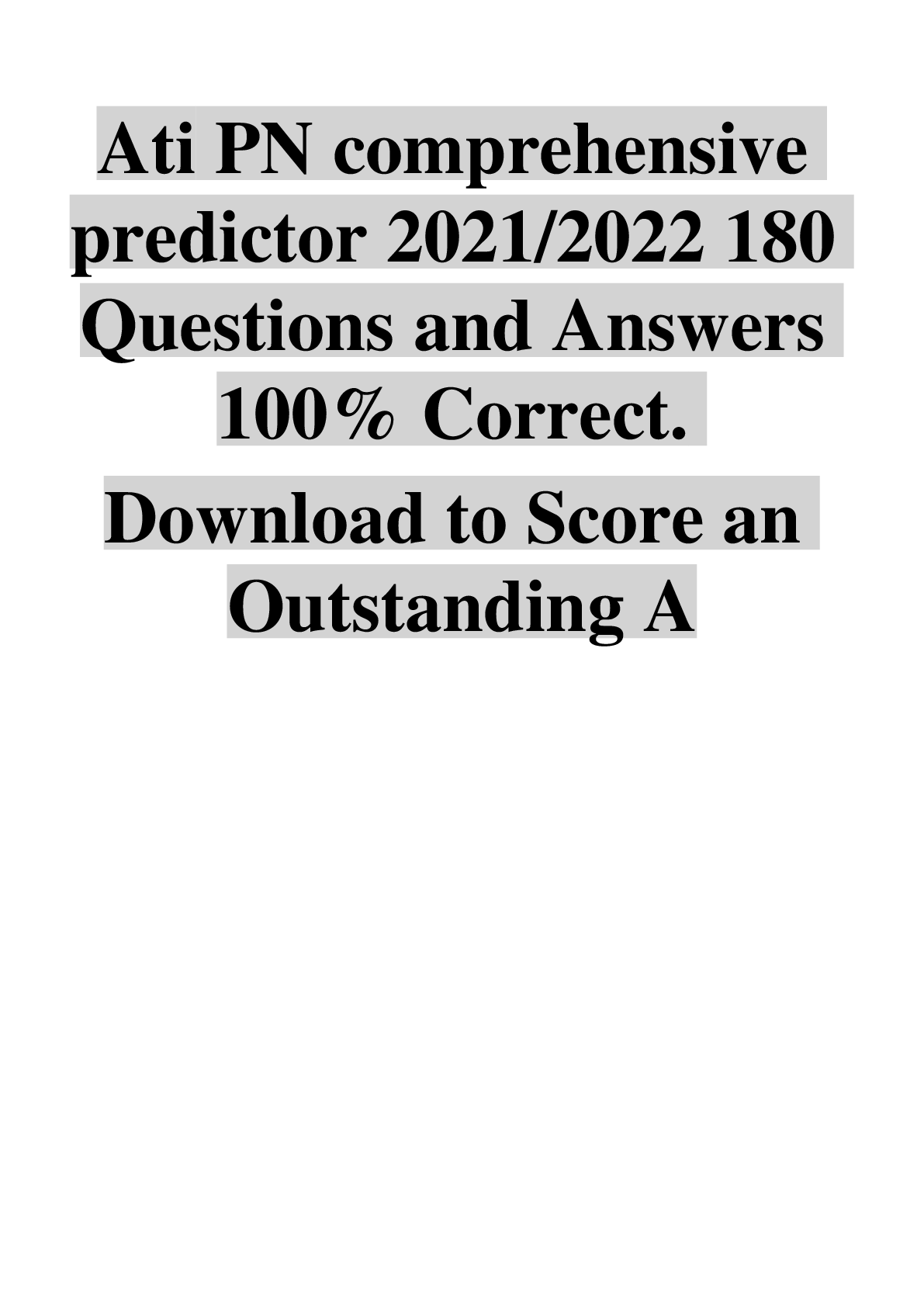
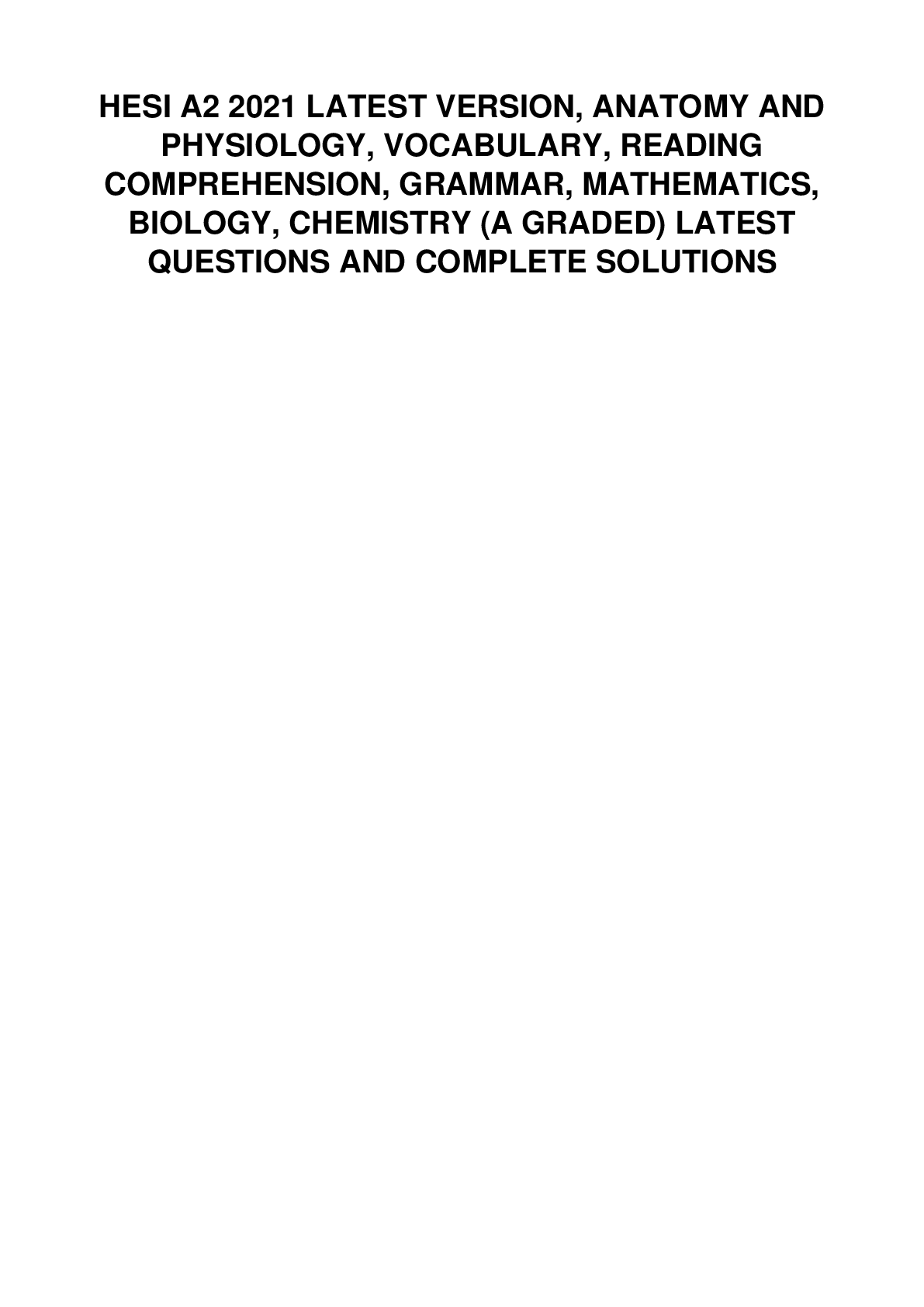
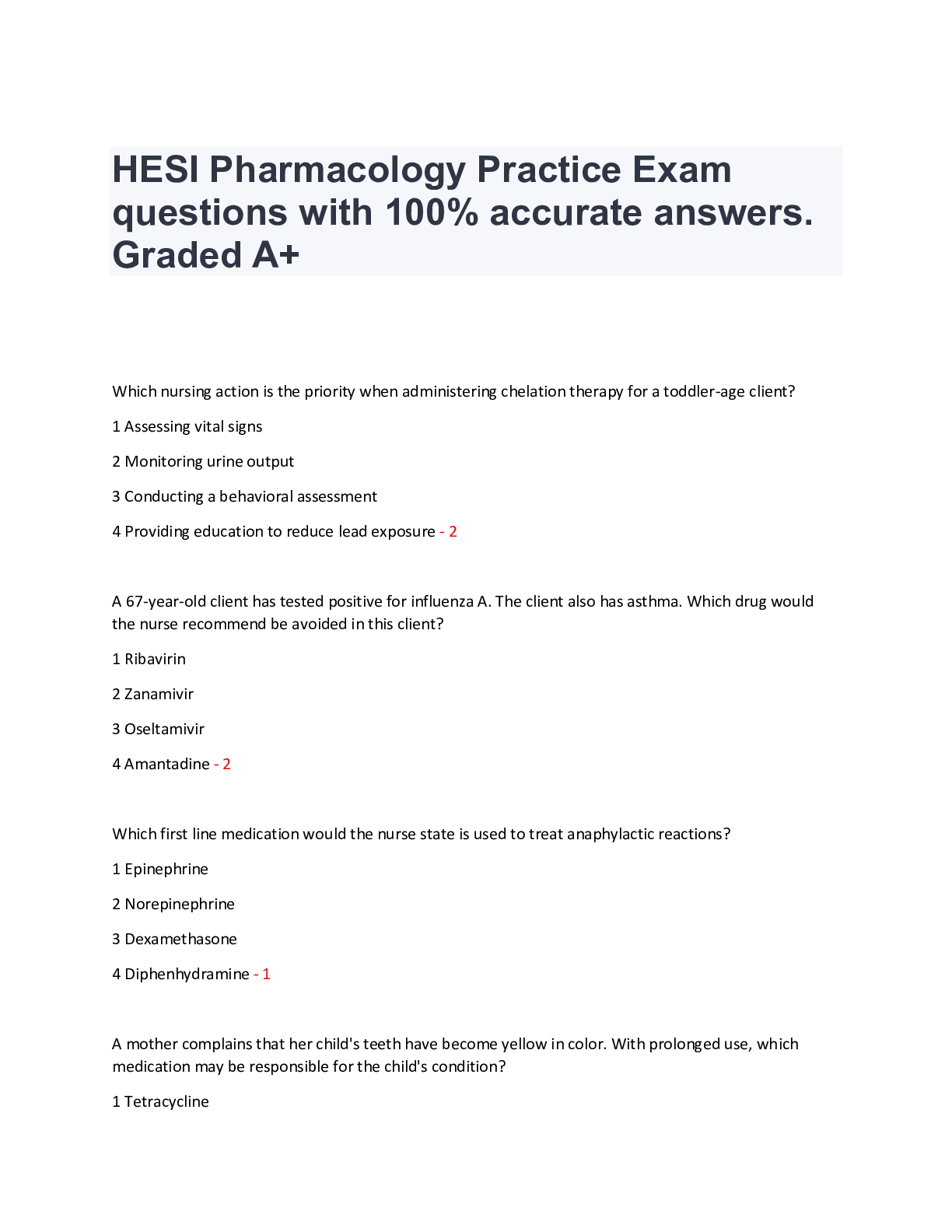
.png)

